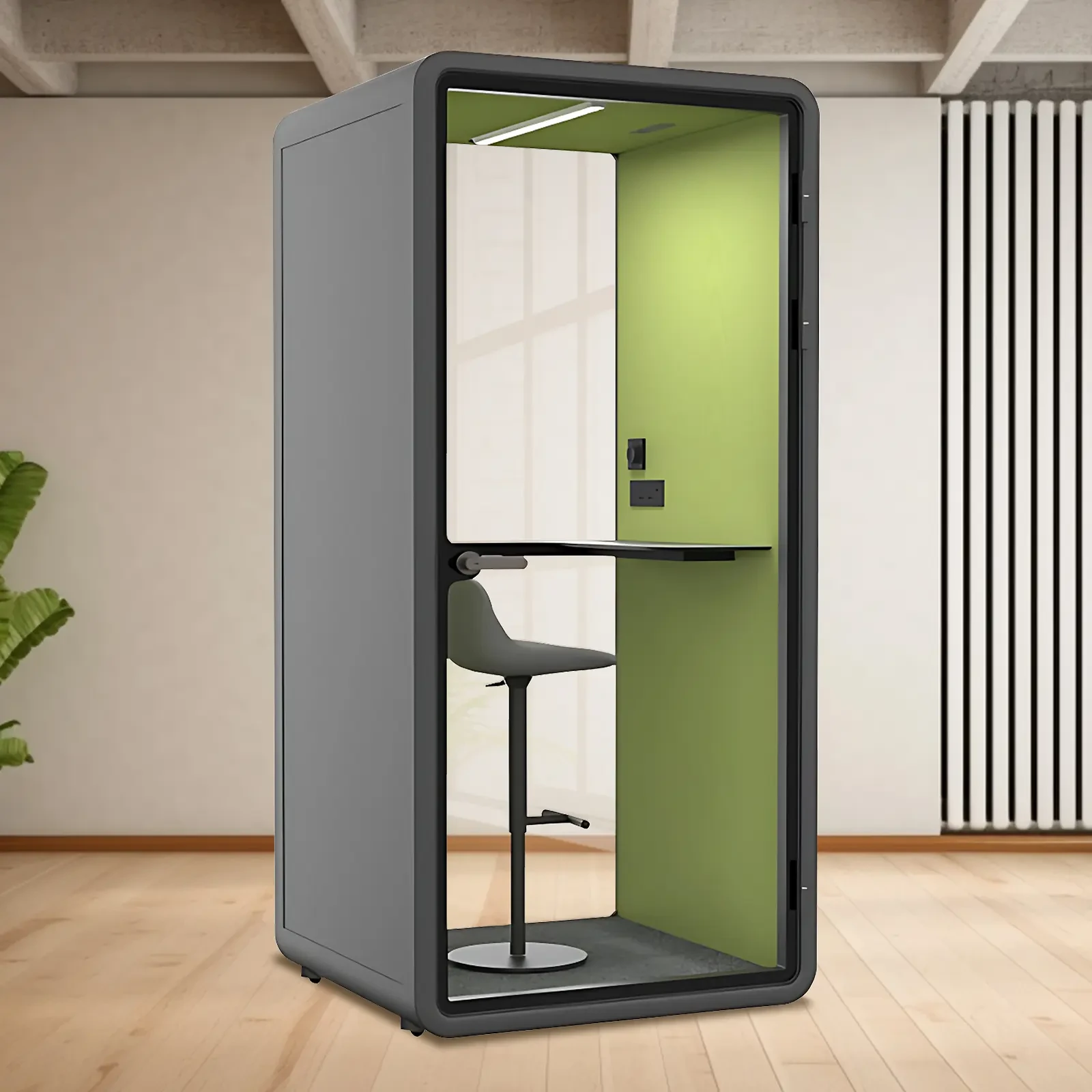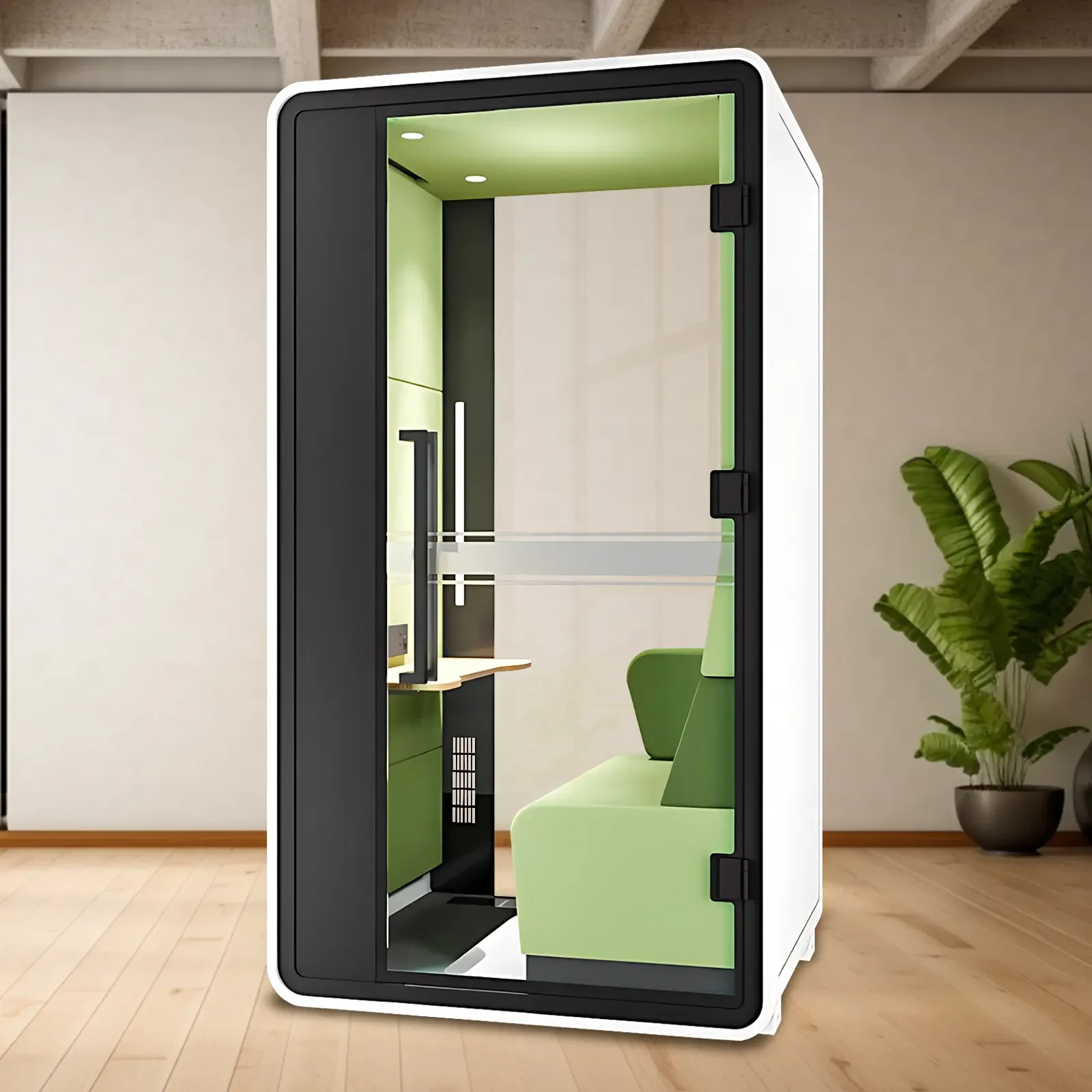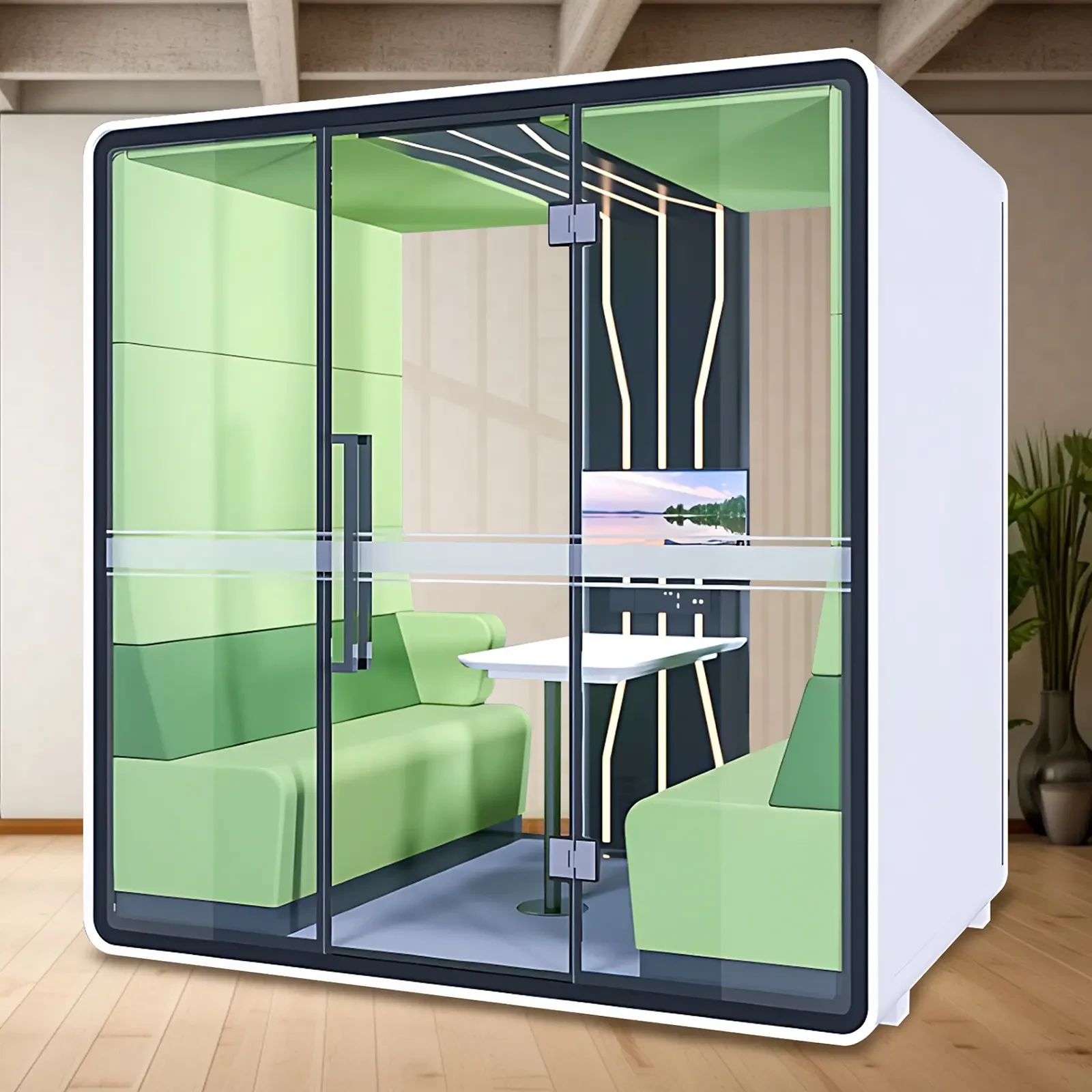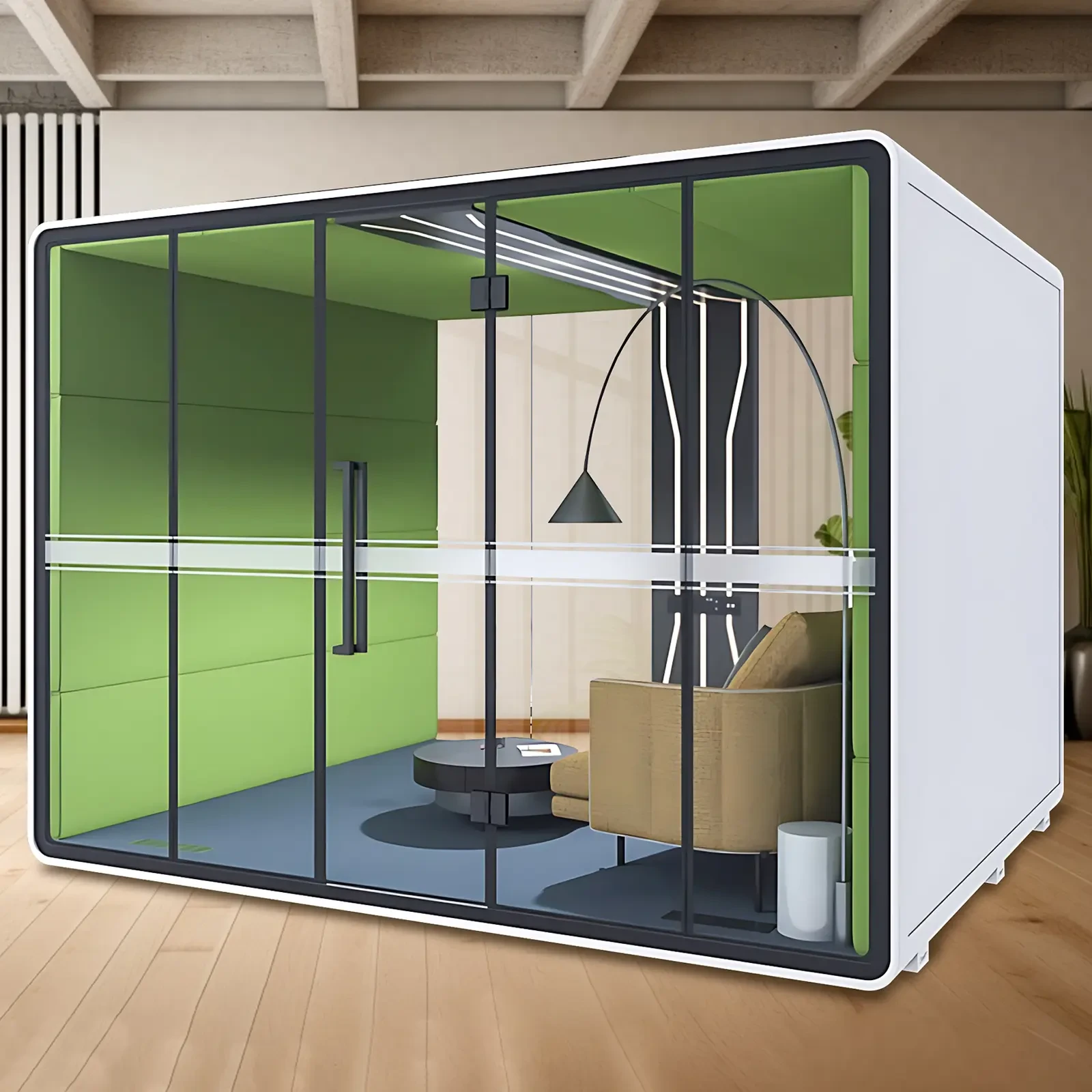Want to play piano at home without disturbing others, record songs without distortion, or make phone calls without awkwardness? This "mini recording studio" is trending! It's more than just a soundproof room; it's an all-in-one space for practicing, livestreaming, recording, and making calls. This article will explain how it works, how to choose it, who it's suitable for, and a practical guide to avoiding pitfalls. With prices ranging from 3,000 to 12,000 yuan, which one truly offers the best value? Read this before you buy!
What is a soundproofed, silent room? It's not just any cubicle!
Don't be fooled by the name; this isn't just a "tiny tent" or a "corner covered in soundproof panels." A true soundproofed, silent room is a movable, enclosed space with a scientific acoustic design, specifically designed to isolate external noise and prevent sound leakage. Simply put, it's like "putting on a soundproof armor" for your room. It originated from the demand for professional recording studios. With the rise of working from home and social media, it gradually became commonplace in every household. Now, you can easily create a "personal recording studio" at home. Whether playing a piano piece, recording a short video, or holding an online meeting, you don't have to worry about disturbing neighbors or having background noise ruin the atmosphere.
Common aliases include: silent cabin, portable recording studio, home recording studio, soundproof phone booth, and music practice pod. In English, it's often called a "soundproof booth" or "portable studio pod."
Core Principles and Key Parameters: Soundproofing doesn't equal thick walls; it relies on a "triple defense" approach.
Many people think a soundproof room is simply a stack of foam boards. This is completely wrong! A truly effective soundproof room requires the golden triangle of "mass + sealing + sound absorption," like setting three barriers to sound:
First barrier: Mass barrier (Mass Law)—using high-density materials to block sound penetration, such as double-layer steel and polyester fiber composite panels, typically between 8 and 15 mm thick. Second Step: Sealing (Air Tightness) - Door and window gaps are "highways" for noise. High-quality soundproof rooms use magnetic sealing strips and angled doors, resulting in a sound leakage rate of less than 0.1%.
Third Step: Internal Sound Absorption (Acoustic Absorption) - The interior walls are covered with sound-absorbing cotton (usually polyester or rock wool) to absorb reflected sound waves, prevent echoes and reverberation, and enhance sound clarity.
Key Specifications 👇:
✅ Sound Isolation (STC): ≥35dB is considered basic, 45 and above is considered "professional";
✅ Sound Absorption Coefficient (NRC): ≥0.8 is optimal; a higher value reduces echoes;
✅ Size: Starting at 1.2m x 1.2m, with a height of approximately 2.1m, large enough to stand upright or place an instrument;
✅ Material: Metal frame + environmentally friendly panels + fire-retardant cotton, safe and reliable.
Who should use it? Suitable for a wide range of scenarios, not just for piano practitioners.
Think only piano teachers need it? No! These silent booths are becoming an "invisible necessity" for modern families 🏠.
✨ Suitable for:
🔹 Piano/guitar enthusiasts: Playing without disturbing others means your downstairs neighbors can finally sleep peacefully 💤.
🔹 Self-media creators: Shoot vlogs, voiceovers, and livestream products with a clean, noise-free background, enhancing the audience experience 📈.
🔹 Home workers: Block out crying children, barking dogs, and TV noise during video conferences, enhancing your professionalism 💼.
🔹 Vocal music learners: Hear your voice clearly while practicing, correct your pitch, and improve twice as fast 🎵.
🔹 Home phone booth users: Take important calls without interruptions and with greater privacy 📞.
🚫 Notes:
⚠️ Not recommended for long-term use in enclosed spaces; regular ventilation is required.
⚠️ Due to limited interior space, larger individuals may find it somewhat cramped.
⚠️ Avoid strong electromagnetic sources (such as microwave ovens and routers), as these may affect device signals.
Buying Guide: 5 Key Points to Avoid "IQ Tax" Traps
There are a wide variety of products on the market, with prices ranging from three thousand to tens of thousands of yuan. How can you choose the right one and avoid being scammed? Remember these five points:
Check the STC sound insulation rating: Don't be fooled by vague claims like "super sound insulation." Focus on the STC value in the test report; a value of 40 or higher is considered reliable.
Check the sealing details: Are the door gaps tight? Are there impact-resistant bumpers? These details determine the amount of sound leakage.
Pay attention to the internal material: Is the sound-absorbing foam environmentally friendly? Is it flammable? Opt for Class A flame retardant and formaldehyde-free materials.
Consider portability: Is it disassembled and assembled? Does it have wheels? A must-have for relocating!
Brand and After-Sales Service: Choose a brand with a physical factory, installation instructions, and a warranty for greater peace of mind.
📌 Recommended Reference Models (not advertisements):
🔸 Entry-Level Model: 1.2m × 1.2m, STC 38, priced approximately 3,000-5,000 RMB, suitable for students or temporary use.
🔸 Mid- to High-End Model: 1.5m × 1.5m, STC 45+, with light and USB microphone port, priced between 6,000-9,000 RMB, suitable for streamers/creators.
🔸 Flagship Model: Customizable size + smart temperature control + wireless screen projection, priced up to 12,000 RMB, suitable for professional recording needs.
Conclusion
Soundproof rooms and silent rooms are no longer just for audiophiles; they are now practical tools for improving the quality of life in modern families. They offer quiet, focused, and professional living in a single square meter of space. Whether you're quietly practicing piano, recording a song, or holding a productive meeting, it can help you "block out the world and focus on yourself." 🌟
Purchase wisely and avoid being fooled by hype about "transforming into a recording studio in seconds."

 USD
USD
 GBP
GBP
 EUR
EUR



